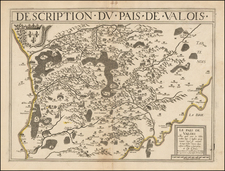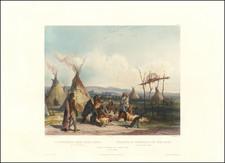This 1720 engraving, part of the "Mirror of Folly" series, is a satire on the financial crisis in Paris that year. At the center of the scene, a triumphal chariot is being pulled by two toads, symbolizing the greed and corruption underlying the crisis. The chariot is driven by a female figure representing Deceit, highlighting the fraudulent nature of the economic bubble.
In the front of the chariot, Bombario sits holding a bag filled with money and various papers, perhaps signifying the rampant speculation and investment that contributed to the financial meltdown. Behind him in the wagon, a figure of the Devil is blowing with bellows into the backside of Harlequin, who in turn vomits shares onto the crowd surrounding the wagon. This grotesque imagery illustrates the chaos and frenzy that surrounded the financial markets during this period.
The crowd surrounding the wagon is inscribed with different names of Dutch cities, indicating that the effects of the crisis were widespread and impacted many areas. The chariot is headed towards a gate where the coats-of-arms of Amsterdam, Haarlem, and Leiden are hanging, suggesting that these cities were particularly affected by the crisis.
The engraving includes a title, inscriptions, and an explanation in Dutch verse in four columns by 'Philadelphus', offering further context and commentary on the satirical scene depicted.










![[Charles Lindbergh] Lindbergh Spirit of St. Louis](https://storage.googleapis.com/raremaps/img/small/67114.jpg)
![[First California Wine Making Image] The Vintage In California -- At Work At The Wine Presses](https://storage.googleapis.com/raremaps/img/small/89054.jpg)

![[Grand View of Paris] Lutetiae, vulgo, Paris, Urbis Galliarum Primariæ, Non Europæ Solius, Sed Orbis Totius Celeberrimæ Prospectus](https://storage.googleapis.com/raremaps/img/small/77258.jpg)
![(16th Century Drake Portrait) Sr. Frauncis Drake knight [Engraved portrait of Sir Francis Drake, with globe, navigational instruments, armillary sphere and a compass]](https://storage.googleapis.com/raremaps/img/small/87606.jpg)